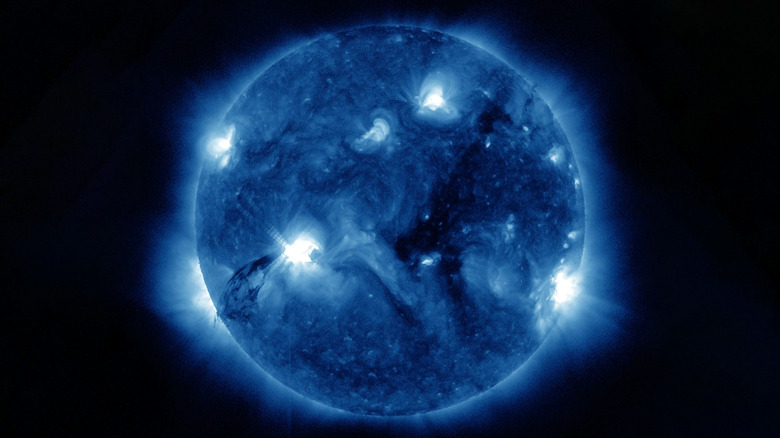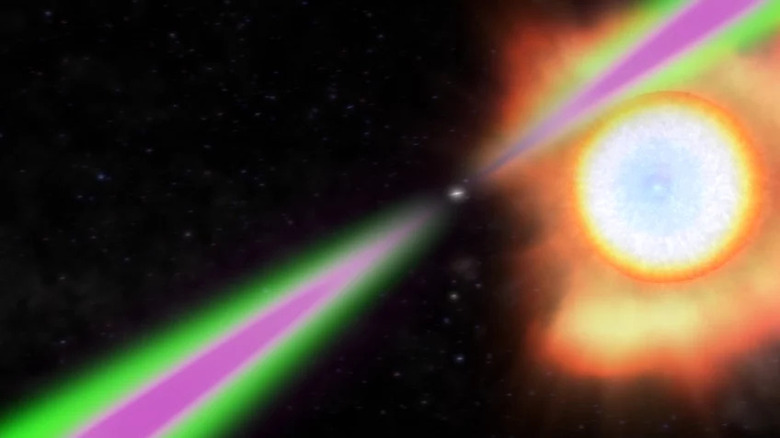This Vast Neutron Star Shocked Scientists With Its Size - And It's Been Feasting
Some of the densest objects in the universe are neutron stars. Neutron stars are the remnants of stellar cores left behind when a star has gone supernova. The only known objects denser than neutron stars are black holes, which form in the same way. Depending on the mass of the star going supernova, its core will become either a neutron star or a black hole (via Smithsonian Magazine).
Neutron stars may be small objects — they are typically around 12.5 miles across — but they have a lot of mass, which is why they are so dense. Recently, astronomers discovered the heaviest neutron star so far, a monster that weighs in at 2.35 times the mass of the sun (via W.M. Keck Observatory), heavier even than the previous record holder at 2.17 times the mass of the sun. This is significant because astronomers want to know the limits of how dense a neutron star can become before it collapses and turns into a black hole.
"We know roughly how matter behaves at nuclear densities, like in the nucleus of a uranium atom," said one of the researchers, Alex Filippenko of the University of California, Berkeley. "A neutron star is like one giant nucleus, but when you have one-and-a-half solar masses of this stuff, which is about 500,000 Earth masses of nuclei all clinging together, it's not at all clear how they will behave."
The object, called PSR J0952-0607, is spinning 707 times per second as well, making it one of the fastest spinning neutron stars known. It was observed using the Keck Observatory in research published in the journal The Astrophysical Journal Letters.
A black widow neutron star
This hefty neutron star has a grizzly story, as it is devouring material from its nearby binary partner. It is a type called a black widow neutron star, named after the spiders which eat their mates. In astronomical terms, this object has shredded its nearby stellar companion through the forces of gravity and consumed its matter, feeding on it (via W.M. Keck Observatory).
The companion star in this system is now just 20 times the mass of Jupiter, which is very small by stellar standards, and its shape has been distorted by the mass of the nearby neutron star. It is also tidally locked to the neutron star, meaning one side always faces it, and the temperatures on this side are over 10,000 degrees Fahrenheit. That's hotter than our sun, which makes it possible to see the desiccated star through telescopes even though it's small.
Studying these black widow neutron stars which grow to very large masses can help researchers learn about the limit at which a neutron star turns into a black hole. The researchers that were a part of this most recent set of findings have suggested that the recently identified object could be close to that limit already, and that they won't likely find any neutron stars which are more massive.
"We can keep looking for black widows and similar neutron stars that skate even closer to the black hole brink," Filippenko said. "But if we don't find any, it tightens the argument that 2.3 solar masses is the true limit, beyond which they become black holes."

